The Need
Not too long ago IoT was a new and almost unbelievable concept, that seemed far too advanced to most. But in the last few years the adoption of IoT technology has accelerated, as we now understand the need for automation and generating data.
For businesses the benefits are endless, few examples are automated work that saves time, the ability to work from remote, using the generated data to increase efficiency and productivity, and it all leads to saving money and resources.
IoT management in a business lets you analyze different aspects of the business by monitoring machines as well as employees. The business can become more efficient and the business decisions are based on accurate data rather than we might assume or hope that is happening.
The Idea
Getting all this information is easy, but how can a business manage it all in one organized place to fully utilize its potential? And does it require a deep technological understanding and abilities?
Axonize is a code-free IoT platform that can connect to any smart device from anywhere. It provides a management system with a rules engine to create automation, dashboards, and data visualization and lets you fully customize it to your business.
However, this is all done on the web application, and often businesses need to be able to monitor and make simple changes on the go. Especially regarding the rules, alarms and devices information.
There was a need for a matching mobile app, with less complexity that will allow the users to quickly and easily view and edit the main business data, in order to maximize the potential of the IoT in their business.
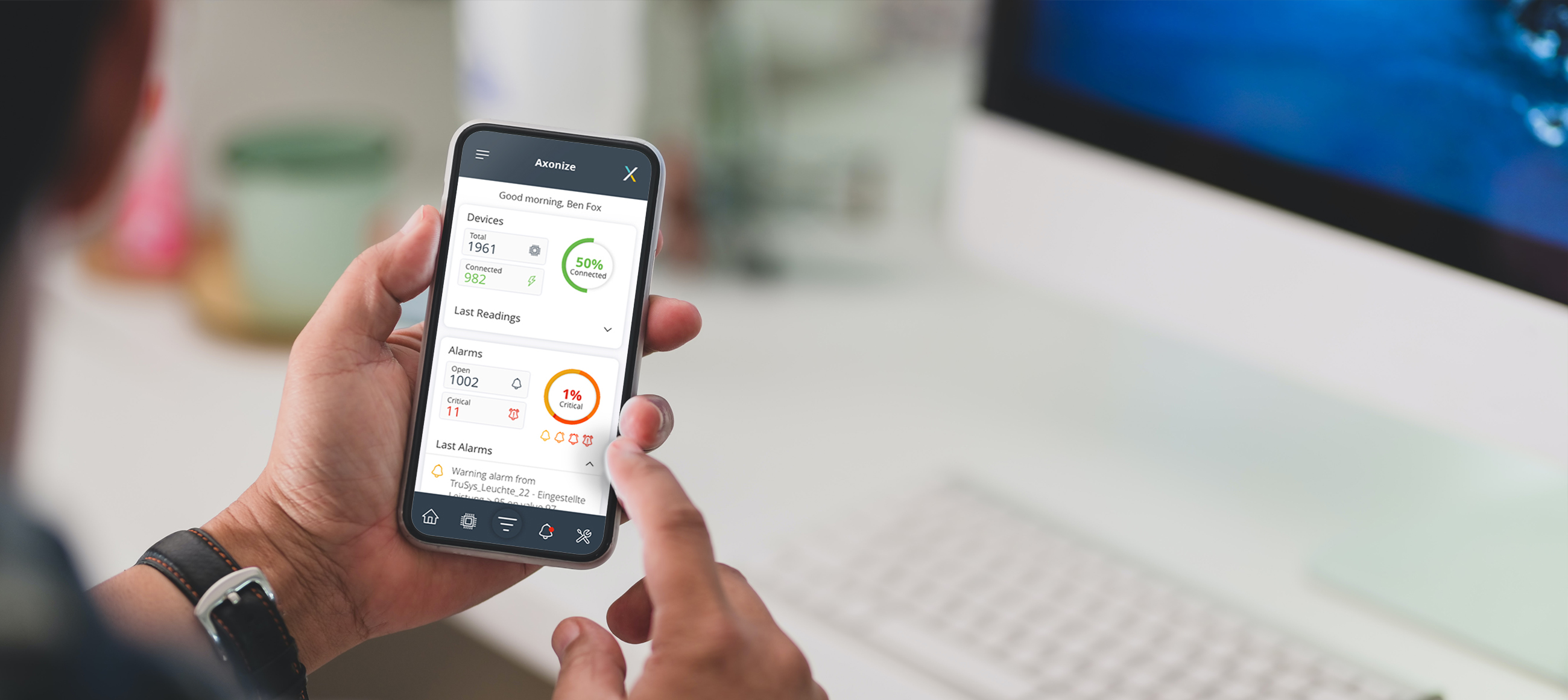
Main Research Questions
Who in the company uses the IoT data most and for what? What are the main usage of IoT on the go for businesses? How can we simplify a very complex platform to a mobile view?
Insights from Research
The term IoT refers to every device connected to the internet, but it is more specifically used to describe objects that "talk" to each other, and to cloud platforms.
Simply, the Internet of Things is made up of devices - from simple sensors to smartphones and wearables - connected together...
-Matthew Evans, the IoT programme head at techUK.
According to Gartner, a variety of some 21 billion connected things are collecting data and performing all sorts of tasks at this very moment. Although the majority are still consumer devices, there are still many that serve business. Nowadays, almost every enterprise relies on IoT devices in one form or another.
In the last few years the Internet of Things has truly become a necessity for business, with Gartner predicting that the enterprise and automotive IoT markets will grow to 5.8 billion endpoints in 2020 - 21 percent increase from 2019.
The Internet of Things allows for more efficient data gathering. The smart devices record and transfer data to monitor important processes, give new insights, increase efficiency, help in creating new business models and revenue streams, and allow companies to make more informed decisions.
The adoption of IoT continues to grow globally as more and more companies are running trials, and the number of enterprises that are considering exploring new IoT use cases went up to 60 percent in 2018, compared with less than 40 percent in 2016. Eighty-five percent of IT decision-makers say they have at least one IoT project in the proof of concept, learning, or purchase phase in their organization, according to a Microsoft survey.
In the near future, we can expect to see the agriculture, health, insurance, telecommunication, retail, manufacturing, automotive, public sector, and transportation and logistics industries integrating IoT in their business as they develop new business strategies, business models, and new revenue streams.
GSMA Intelligence estimates that IoT adoption will add up to $370 billion per annum to the global economy by 2025.
In an IoT environment, our smartphones and tablets can perform as remote controls. Our devices come with full set features and connectivity options, such as Wi-Fi, NFC, and Bluetooth that qualify as great IoT controllers.
According to Statista, there are estimated to be over 2.5 billion smartphone users worldwide. Additionally, research has shown that smartphone usage will increase considerably as mobile connectivity becomes more widespread as well as faster and more reliable.
In a research survey of decision-makers in various corporates on smartphone use, 93% said they continuously had a smartphone available for use during business hours, and 55% reported that if they could access data more readily on their smartphones, it would help decision-making.

The Users
There are many types of users that will be using this app in various ways, from the business executives who will be the ones making the decisions on which IoT tools to use and implant in their business, to the workers from all levels who will be using the platform for different needs.
We focused our product on the mid-high level employees who are part of the decision making and implementation and are usually the ones using the platform later on for the bigger picture, and deeper level of business understanding.



Mapping The Screens
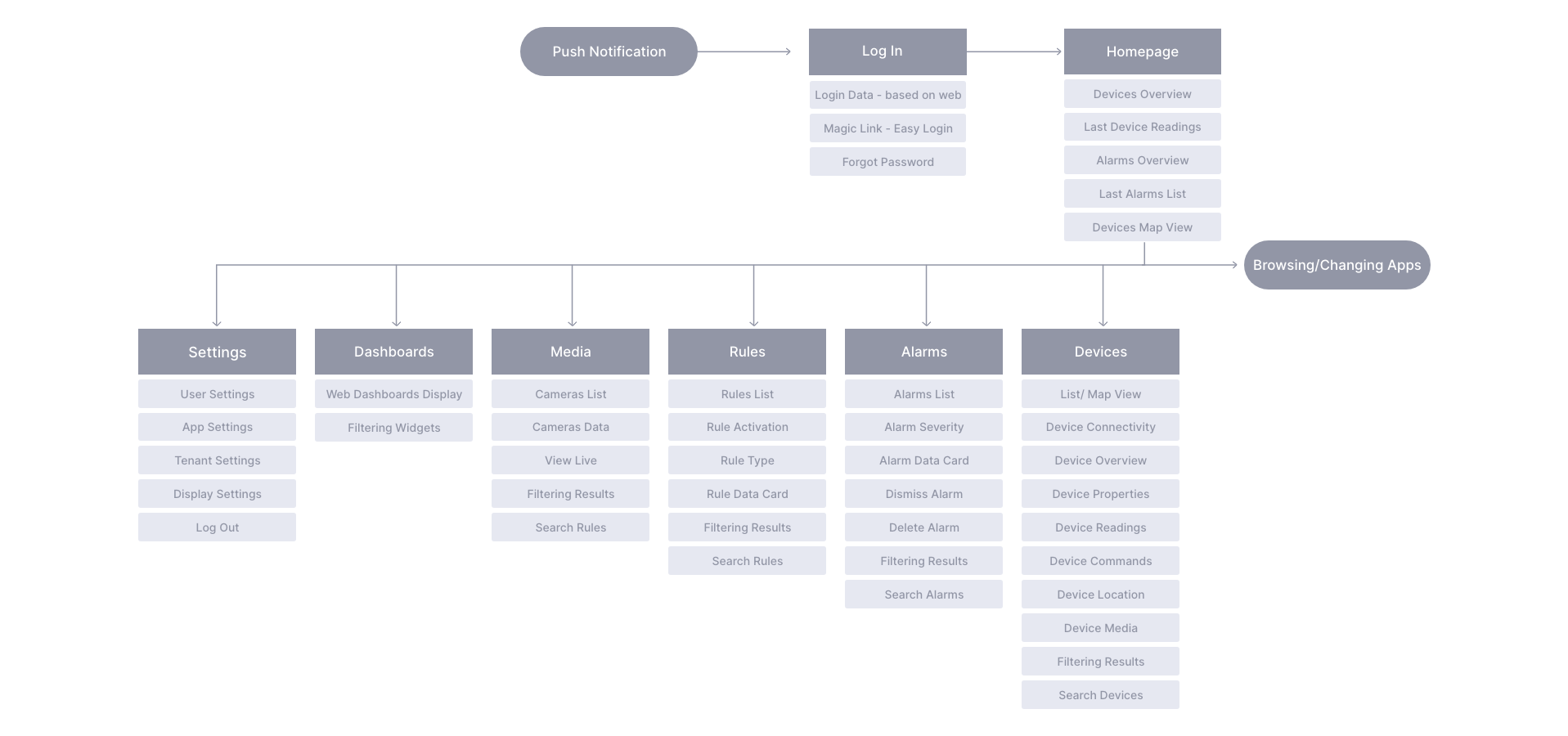
Wireframing
When starting to plan the mobile application's structure I knew the app had to match the logic of the web application, since many of the users will be using both. However, 'web first' makes mobile last, and I didn't want the web application to compromise the user experience of the new mobile application.
Since this is a complex platform, and it is used by businesses to make very important decisions I centered my wireframing decisions around the concepts of simplicity and organization, keeping only the most necessary information and making it easy to navigate between the connected parts of the app.
One of the key decisions I made is to translate the web application's table structure to a structure of stacked cards, that uses the mobile screen better and keeps the structure simple and clear to the users.
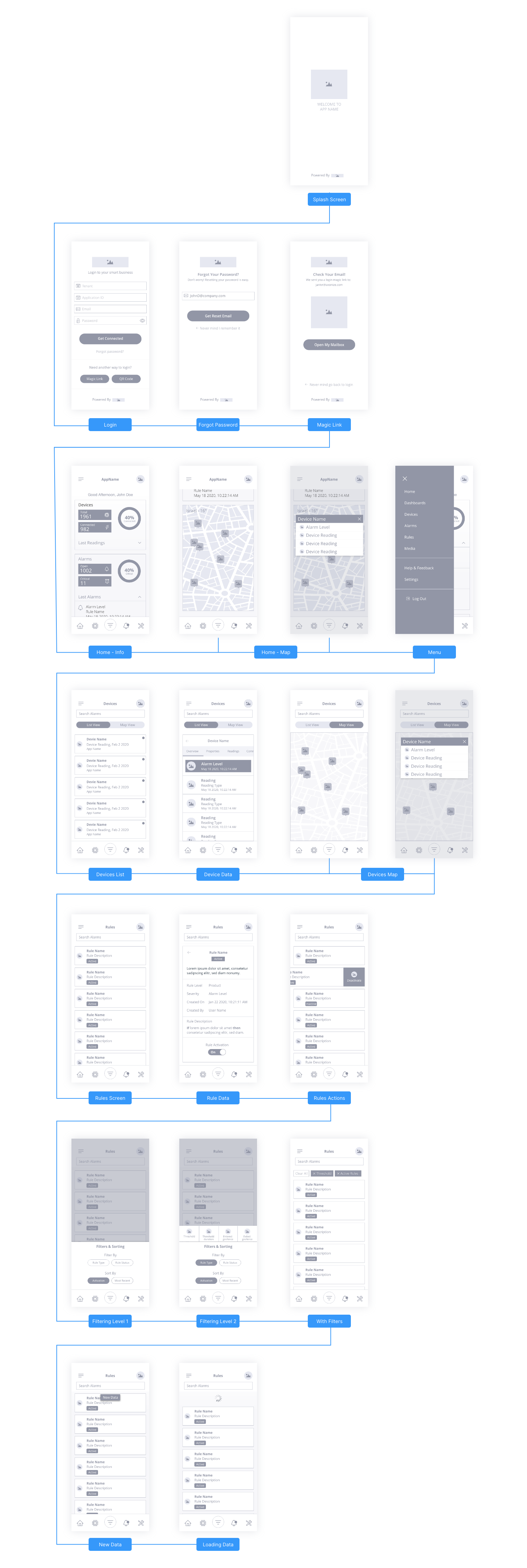
Visual Design & Branding
Although the company has a clear brand, the challenge here was that this is a white-label product that needs to be easily rebranded and adapted for each business.
I wanted the design of this app to promote the following concepts: simplicity, technological and trustworthy. I chose simple and clean colors pallet that will easily blend with any business branding, without feeling forced or detached. I choose a font that is very readable and very common, and support both Hebrew and latin languages.
Fonts

Color Palette
Design Tools



The Final product
Login Process
Since this app is used for business, the app must have a very secure login process. This makes it a bit more complex and challenging to design. My main goal was to keep these screen as clear and simplified as possible, so the user will feel less overwhelmed and that the process will be as smooth as possible. I also wanted to keep the login of the app in the same style and feel of the web application, and allow for the branding to really be shown here since it is a white-labled app.
Home Screen
The home screen is a simple predefined dashboard, that shows the main data the user will need - devices overview and latest reading, alarms overview and most recent alarms that were triggered, as well as the devices in a map view. To make it useful for all users, I wanted to keep it clean and only show the most important quick data that is needed on the go.
Device Management
The device management is one of the most complex and important parts of the web application.In the mobile app things had to be simplified, most abilities were stripped down and the user can view the information but not edit or delete the devices.
These screens still needed to have a lot of data in them, and keeping it clean and clear was very challenging, so the hierarchy decisions had to be made after talking to our clients and understanding what is actually needed on the go versus on the web platform.
Dashboards
These dashboards are fully customisable but they are defined on the web application, therefor the design had to match the structure and look and feel if the web dashboards. The challenge here was balancing between consistency and a great mobile experience that doesn't feel web-first.
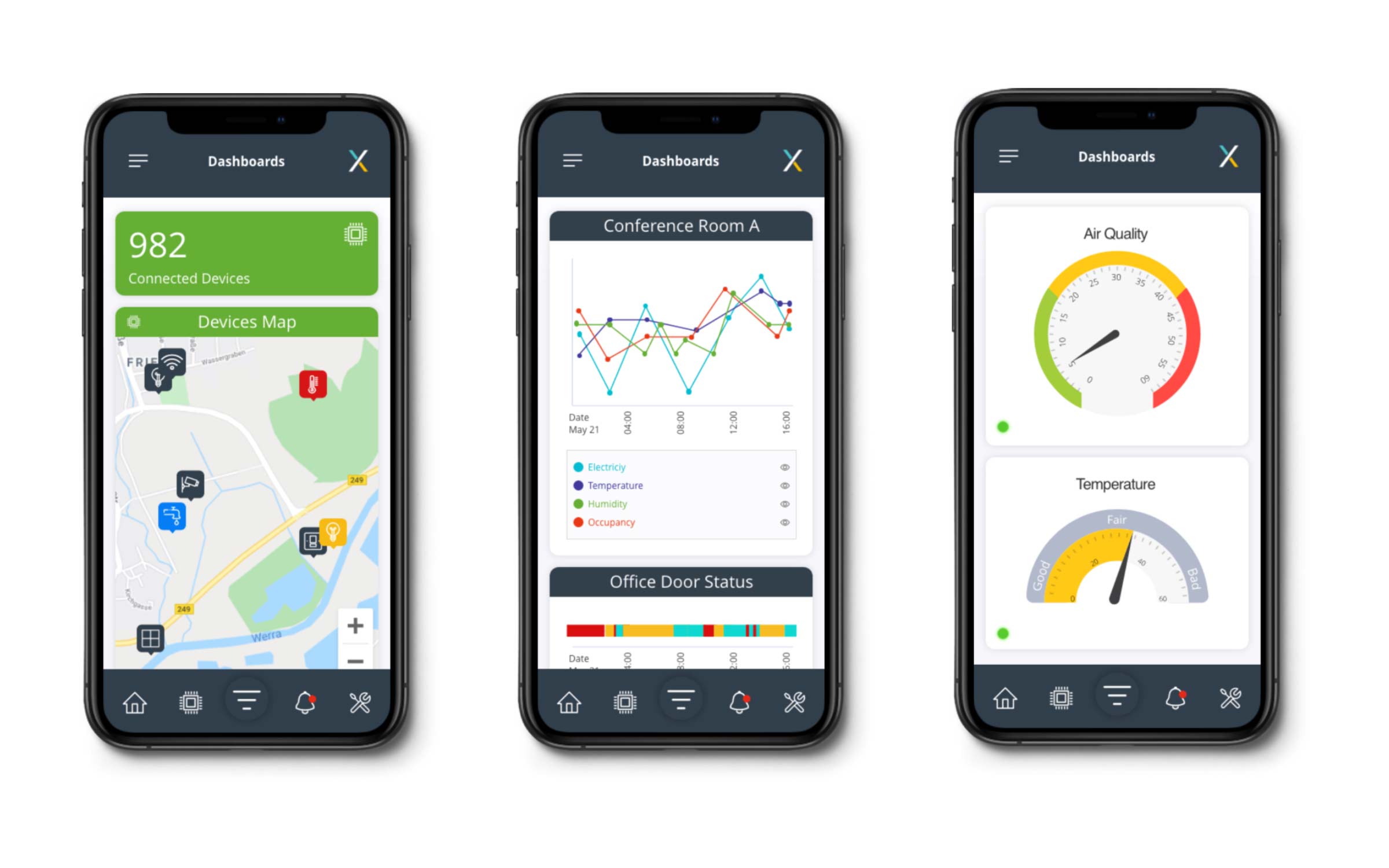
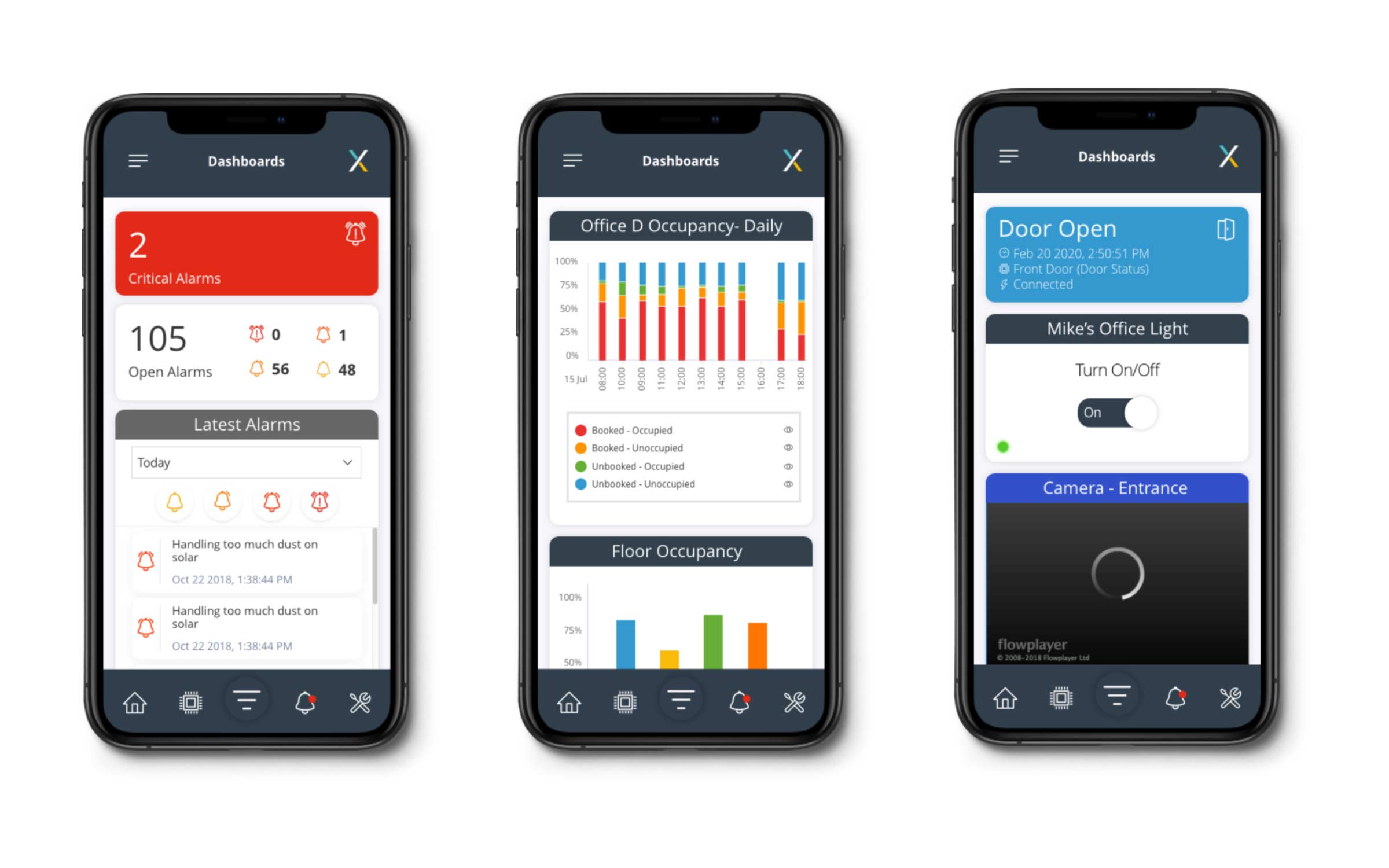
Alarms Screen
The alarms screen on mobile lets the users know which alarms were triggered on their devices, and they can dismiss and delete them at anytime from anywhere. The alarms screen is important, because it alerts indicate an issue, which sometimes can be critical and time sensitive.
Rules Management
The rules engine is an important part of the platform, as it lets the user set specific rules on devices, and trigger alarms and action based on different parameters. The rules cannot be edited on mobile, as they are extremely complex, however it was important that the user will be able to activate and deactivate them on the go.
Takeaways from this project
Taking a fully developed and complex web platform, that is white-tabled and can be used in any industry, and translating it to a mobile application was one of the more challenging ones I've done in my career so far. It forced me to be more creative and to do a lot of planning and a lot of research because I had to organize a massive amount of data in a very limited space while keeping it clear and easy to find any single device, rule, or alarm. I also had to keep it consistent with the web application, because only our web users will have access to this mobile app, and I quickly realized the solution cannot be a 'web-first' design, because that will make it 'mobile-last'.